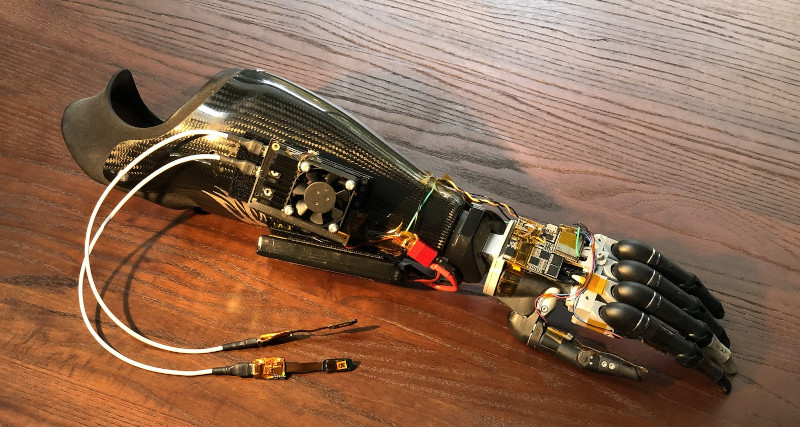Prosthetic limbs have been slow to evolve from simple motionless replicas of human body parts to moving, active devices. A major part of this is that controlling the many joints of a prosthetic is no easy task. However, researchers have worked to simplify this task, by capturing nerve signals and allowing deep learning routines to figure the rest out.

Reported in a pre-published paper, researchers used implanted electrodes to capture signals from the median and ulnar nerves in the forearm of Shawn Findley, who had lost a hand to a machine shop accident 17 years prior. An AI decoder was then trained to decipher signals from the electrodes using an NVIDIA Titan X GPU.
With this done, the decoder model could then be run on a significantly more lightweight system consisting of an NVIDIA Jetson Nano, which is small enough to mount on a prosthetic itself. This allowed Findley to control a prosthetic hand by thought, without needing to be attached to any external equipment. The system also allowed for intuitive control of Far Cry 5, which sounds like a fun time as well.
The research is exciting, and yet another step towards full-function prosthetics becoming a reality. The key to the technology is that models can be trained on powerful hardware, but run on much lower-end single-board computers, avoiding the need for prosthetic users to carry around bulky hardware to make the nerve interface work. If it can be combined with a non-invasive nerve interface, expect this technology to explode in use around the world.
[Thanks to Brian Caulfield for the tip!]
















” If it can be combined with a non-invasive nerve interface, expect this technology to explode in use around the world.”
We just may get the bionic man.
with the way Steve Austin used to lift things,
textbook OHS “How not to lift”
the new one needs a bionic spine
this is the way
Always use a flange..
You don´t need gloves in the winter, when you have a Jetson keeping you warm…
Another advantage for workers who lost their limbs to a machine, is that with this kind of prosthetics, they can continue working by just interfacing to the machine. who needs fingers to actuate buttons when you can do it by thought ?
Why just workers who have lost limbs, imagine operating a crane or backhoe or those big arms they use in nuclear plants with just your nerves.
While the smart-ass in me wants to say “Give this guy a hand!” I’ll forgo that and just say this is amazing, and since they are sensing his nerves why not add some kind of feedback so he can “feel” the force his hand is applying while griping, I’m sure he could integrate it very quickly and make the hand even more usable. This is great until we can regrow limbs.